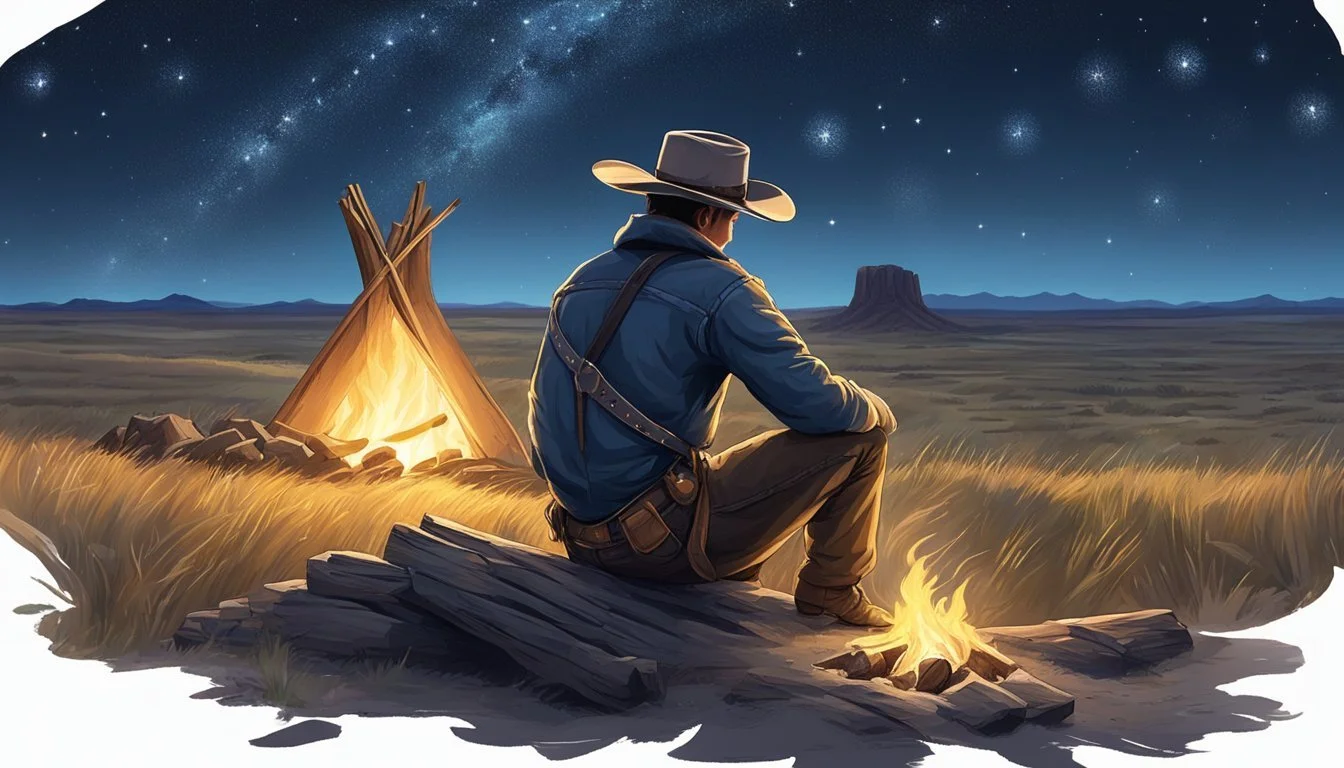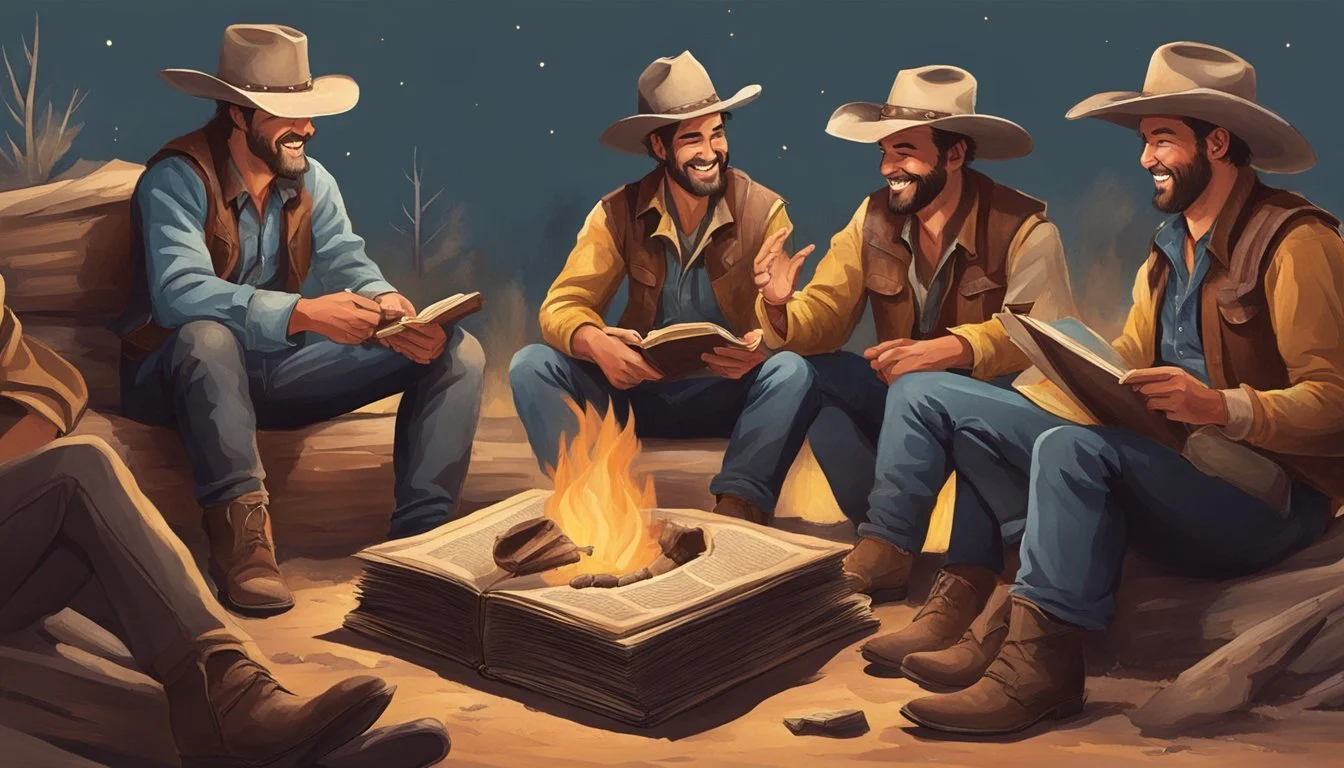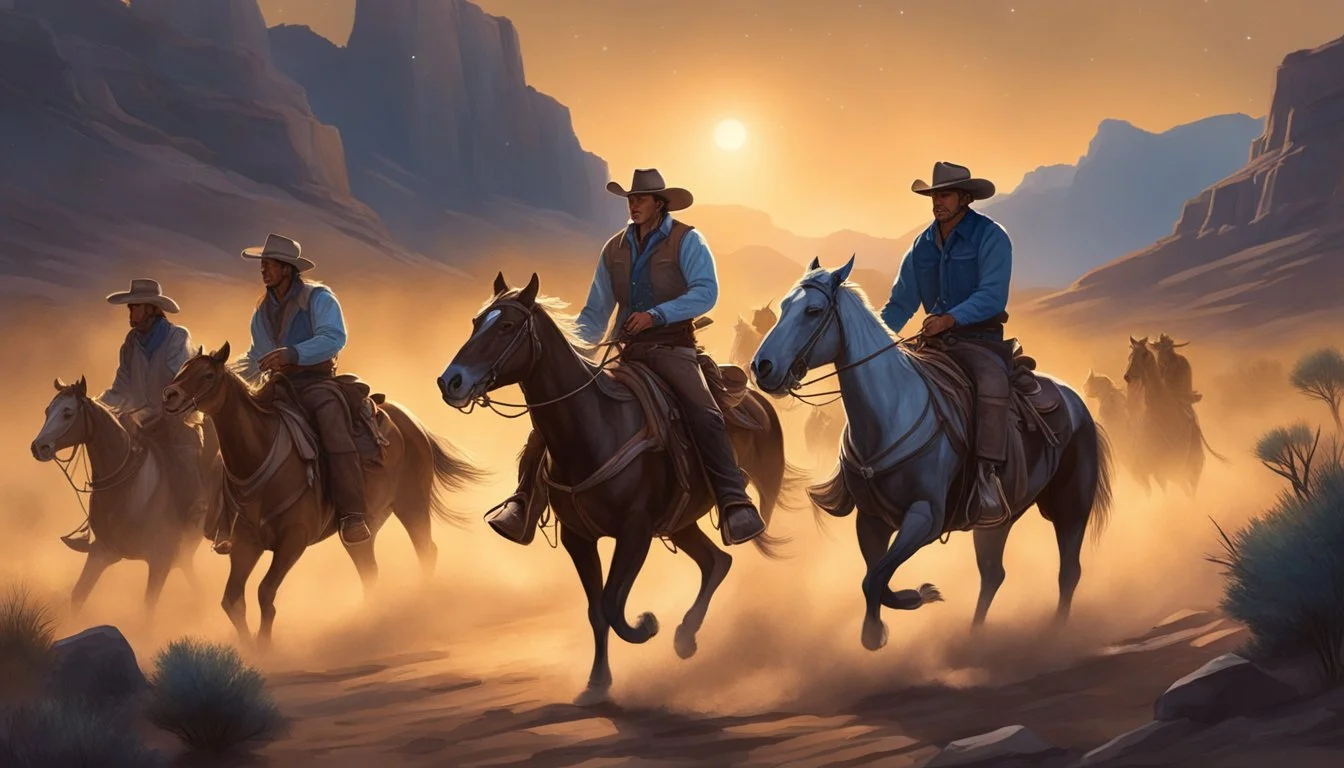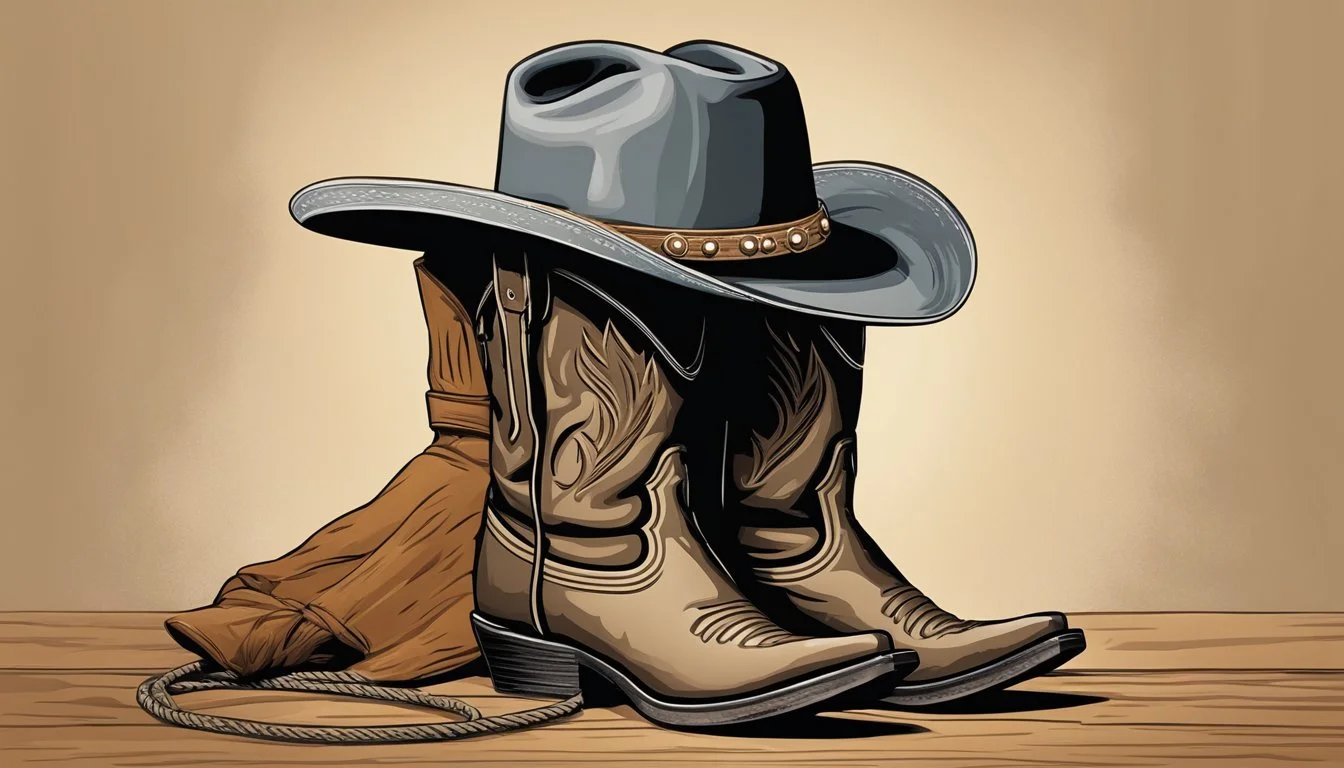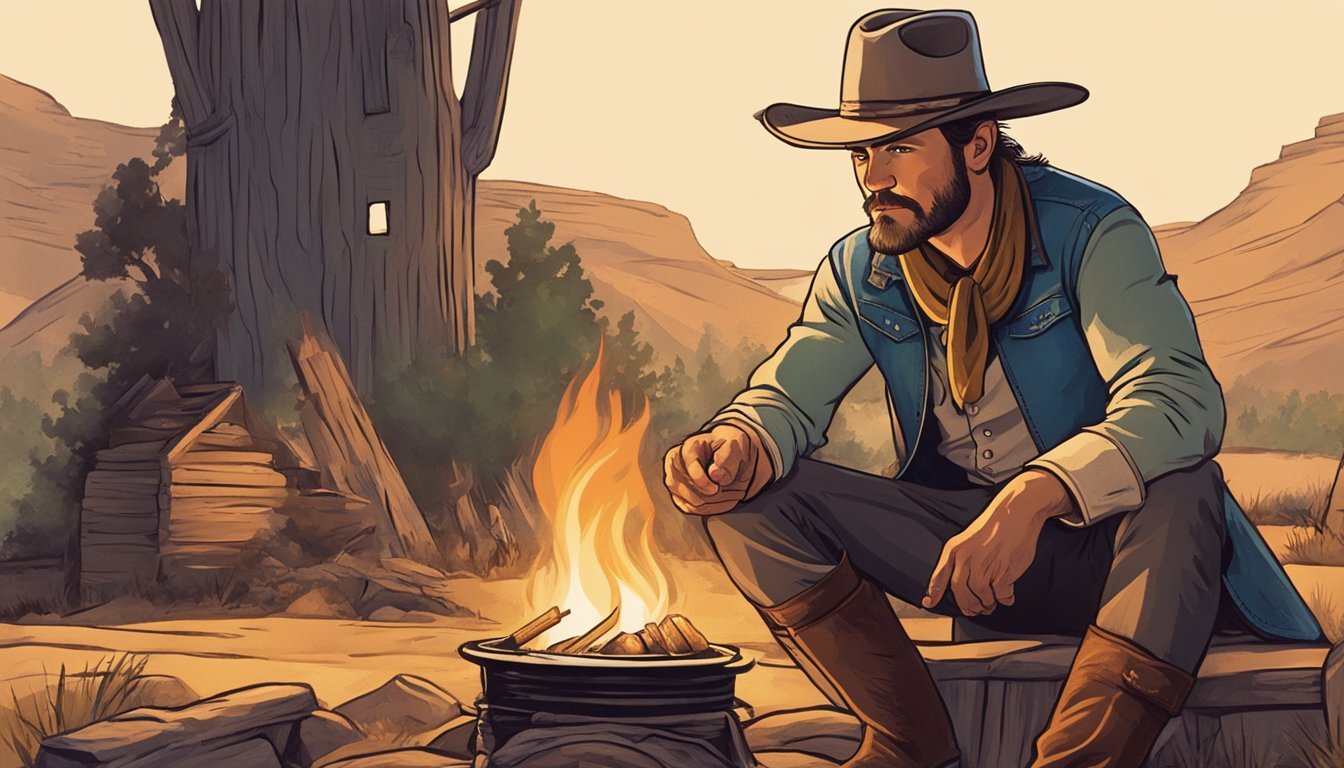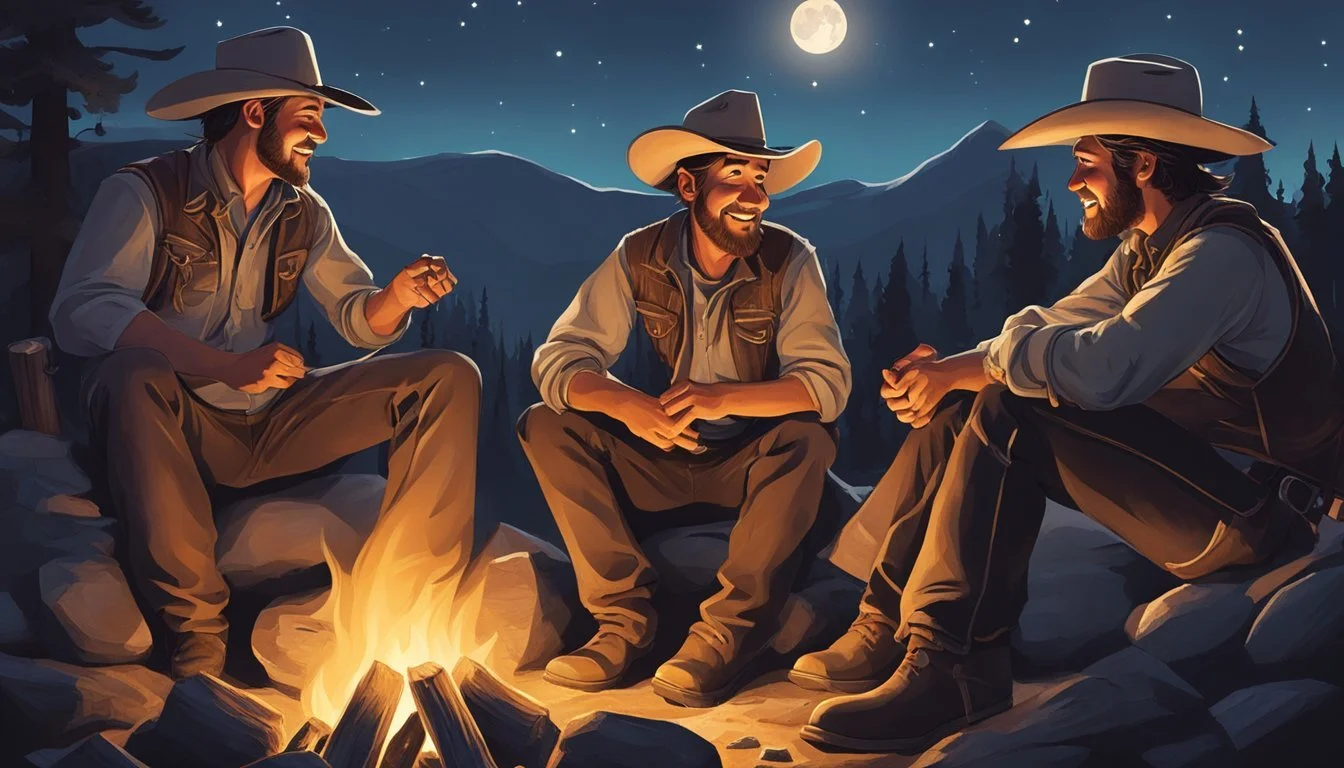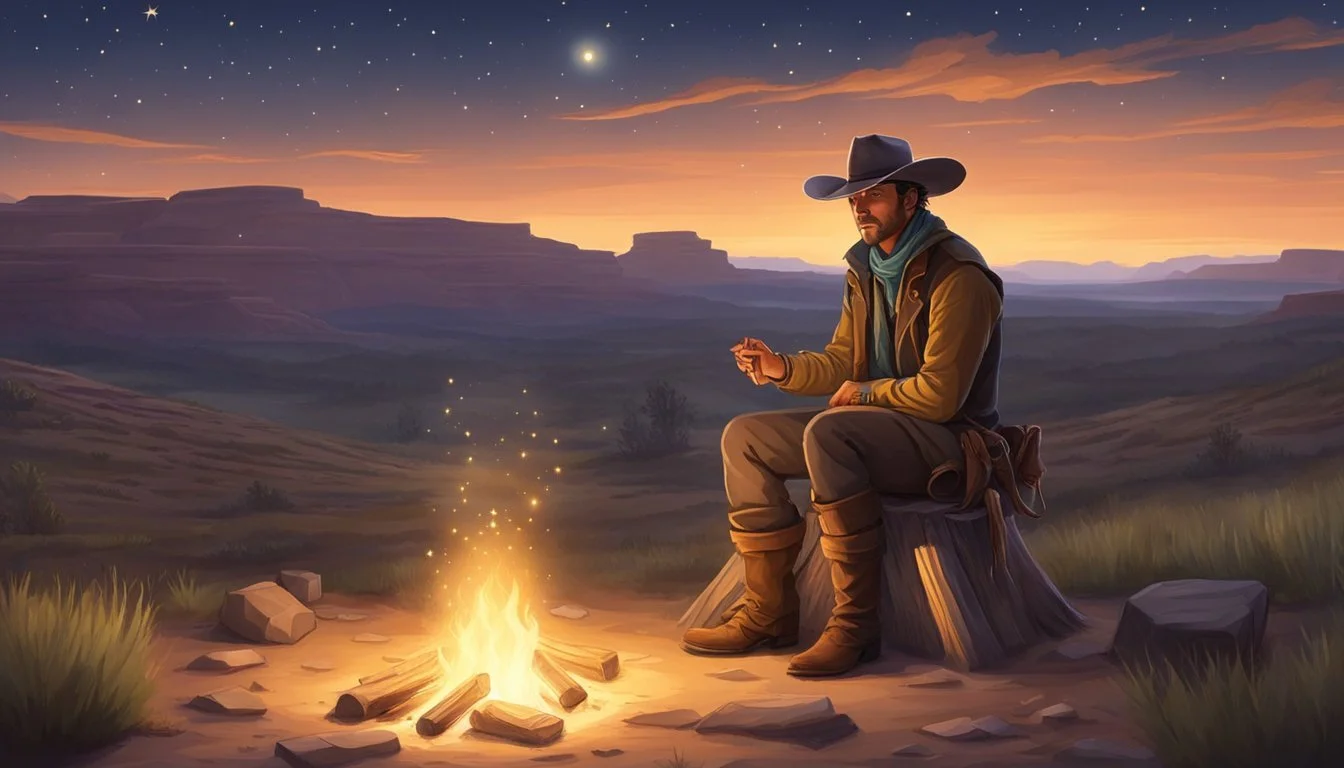The Art of Storytelling in Cowboy Tradition
Capturing the Essence of the Wild West
Storytelling has long been an integral part of cowboy culture, serving as a means to pass down traditions, capture the history, and share the experiences of the American West. Predominantly, these stories emerge from a tradition steeped in the rugged landscapes where cattle ranching and the stewardship of vast herds required not just physical endurance but a rich imagination. Cowboys, often seen as the quintessential emblems of Western ethos, have been immortalized through an oral storytelling tradition that celebrates their unique way of life, their values, and their encounters on the frontier.
The art of storytelling among cowboys did more than entertain; it functioned as a key component in preserving the customs and the collective memory of the community. Around campfires, during long cattle drives, and within the social gatherings at rodeos, tales of bravery, solitude, companionship, and conflict were exchanged, reinforcing a shared identity among horsemen and horsewomen. These narratives were enriched by the authentic experiences of the tellers, often blending fact and fiction and growing in depth and drama with each retelling.
Incorporating everything from personal anecdotes to larger-than-life legends, cowboy storytelling is an enduring expression of North American history. It is a cultural cornerstone that continues to shape perceptions of the cowboy lifestyle, defining it as much by the spoken word as by the actual day-to-day activities of the men and women who lived it. The resilience of these stories lies in their capacity to be reshaped over time while still retaining the core elements of cowboy tradition.
The Historical Context of Cowboy Storytelling
The art of storytelling in the cowboy tradition is deeply rooted in the history and evolution of the American West, shaped by diverse cultural influences and the lived experiences of the cowboys themselves.
Origins of the American West
The American West underwent a period of rapid expansion in the second half of the 19th century, particularly during the 1870s and 1880s. This era saw the emergence of the cowboy as an iconic figure in U.S. history, reflecting the rugged and often untamed nature of the western frontier. The stories told by these cowboys often originated from their daily experiences, the challenges of life on the trail, and the landscapes they traversed, becoming an integral part of American folklore.
Influence of Mexican Vaqueros
The cowboy culture in the United States was significantly influenced by Mexican vaqueros, predecessors of the American cowboy. Early cowboys adopted much from the vaqueros including riding, roping, and cattle management skills. Their influence extended to the storytelling tradition, with cowboys incorporating elements of Mexican style and technique in both practical ranch work and narrative expression.
The Rise of Cowboy Culture
As cowboy culture evolved, it began to encapsulate a wide array of experiences, including relationships with American Indian tribes and the complex, often brutal, realities of westward expansion. These interactions and events were woven into the cowboy's tales, which served as a form of entertainment, moral teaching, and cultural preservation. Storytelling became a revered part of the cowboy identity, with poems, songs, and tales commemorating the life of the cowboy and the spirit of the West.
Through a blend of historical facts and cultural evolution, cowboy storytelling continues to be a testament to the enduring legacy of the American West and its significance within American folklore.
The Essence of Cowboy Tradition
The cowboy tradition is rooted in the historical practices of cattle driving and the open range, enriched by a strong oral tradition of songs, ballads, and poetry that communicate the values and experiences of cowboy life.
Cattle Driving and the Open Range
Cattle driving was central to the cowboy tradition, with famous routes like the Chisholm Trail and the Goodnight-Loving Trail defining the era. Cowboys herded cattle across vast open ranges, an activity that required resilience and a deep understanding of the land and livestock.
Chisholm Trail: Ran from Texas to Kansas, instrumental in the post-Civil War era.
Goodnight-Loving Trail: Extended from Texas through New Mexico into Colorado, created by Charles Goodnight and Oliver Loving.
Songs and Ballads of the West
The cowboy's experiences were often captured in songs and ballads that spoke of love, loss, and the beauty of the Western landscape. These songs served as a medium to preserve cowboy culture and convey the spiritual connection they had to their environment and work.
"Home on the Range": A classic example of cowboy ballads that romanticizes life on the open range.
Rodeo and Music: Celebratory events where cowboys would gather and share these songs.
Cowboy Poetry and Literacy
Cowboy poetry is a distinctive form of storytelling that immortalizes the way of life on Texas ranches, chronicling everything from daily herding activities to the spirituality of cowboy culture. It is a literary tradition that preserves the oral narratives of cowboys and the values they lived by.
Oral Tradition: Stories and lessons passed down through generations.
Literacy: Cowboys were often literate, using their skills to write down experiences in the form of poetry.
This literary form remains a vibrant aspect of cowboy culture, with gatherings like cowboy poetry readings continuing to celebrate this historical and cultural expression.
Artistic Expressions and Western Art
Artistic expressions within cowboy tradition encapsulate a vast array of mediums, each chronicling the rich tapestry of Western life through meticulous craftsmanship and vivid storytelling. These forms marry the rugged spirit of cowboy culture with artistic endeavors, from visually captivating artifacts to the melodic ballads echoing the heart of Western folklore.
Visual Arts: Sculpture and Watercolor
Western art has been profoundly influenced by the cowboy tradition, embodied in various forms such as sculpture and watercolor. Artists like Curt Mattson use sculpture to depict intricacies of the buckaroo life, blending historical accuracy with artistic finesse. Painters, harnessing the fluidity of watercolor, capture the transient light and sprawling landscapes, evoking the boundless Western terrains. These visual arts serve not just as aesthetic contributions but as cultural narratives preserving the essence of cowboy culture.
Sculpture: Bronze figures frozen in action, detailing the daily lives of horsemen.
Watercolor: Vibrant scenes portraying the diversity and spirit of the Western frontier.
Storytelling through Dance and Music
The cowboy tradition is rich in stories, often told through dance and music. Dance styles at events like the rodeo encapsulate the lively spirit of Western gatherings, while music carries the history and legends with each verse. Songs that have traveled through time resound the experiences of diverse communities that shaped the cowboy culture—they are not mere entertainment but the collective heartbeat of a bygone era still resonant today.
Dance: Folkloric expressions ranging from the intricate steps of square dances to spontaneous barn dance gatherings.
Music: Traditional ballads and modern songs that compose the soundtrack to Western narratives.
Preservation in Museums and Workshops
Institutions and community-driven workshops in places like San Antonio are pivotal in sustaining the legacy of Western art. Museums curate exhibits that highlight the confluence of cowboy culture with religious and spiritual influences, while workshops spark dialogue and education about traditional techniques in evolving forms of Western art. This structural support not only conserves historical artifacts but also continues to inspire contemporary artists and enthusiasts alike.
Museums: Compilation of Western art exhibits showcasing sculptures and watercolors, documenting the cowboy journey.
Workshops: Hands-on educational sessions that teach and uphold the crafting traditions of the West.
The Social Fabric of Cowboy Life
The essence of cowboy life is woven through the shared experiences and daily responsibilities that bind the community together. Their culture is marked with an enduring legacy of deep-rooted camaraderie and a distinctive lifestyle shaped by the ranches.
Daily Ranch Activities and Responsibilities
Every day, cowboys face a myriad of tasks that are both demanding and vital to the health of the ranching operations. Ranch hands wake up at dawn, donning their cowboy hats and preparing for a day filled with livestock care, from feeding to herding. Their responsibilities outline the gritty nature of ranch work:
Horsemanship: Includes taming and training horses, essential for managing cattle.
Roping: A practiced skill for catching livestock with precision and care.
Maintenance: Involves repairing fences, checking water supply, and ensuring the safekeeping of the animals.
These activities are not just chores but are learned through dedicated education and experience, becoming second nature to the cowboy. Each task requires not only physical strength but also a deep understanding of animal behavior and an unwavering patience.
Camaraderie and Community in Cowboy Society
At the heart of cowboy society lies a strong sense of community and camaraderie. Cowboys rely on each other for safety and assistance, whether they are branding cattle or confronting the dangers inherent to their line of duty.
Courtesy and Respect: These are the unwritten laws of cowboy code, emphasizing cooperative living and mutual aid.
Storytelling and Music: Strengthen social bonds and entertain after a long day's work.
This close-knit community extends beyond work, as they celebrate successes and provide support during setbacks. Shared experiences, from the mundane to the extraordinary, forge lifelong bonds that are as robust as the leather of their boots. This brotherhood, fostered around campfires and during long cattle drives, is indispensable to the cowboy's endurance both in spirit and in practice.
Cowboy Skills and Rodeo Events
Cowboy skills adapt traditional ranch duties into competitive rodeo events, where horsemen showcase their mastery over rough terrain and livestock.
Herding Techniques and Horseback Skills
Cowboys rely on their herding techniques and horseback skills to effectively manage livestock on ranches with often challenging and rough terrain. Their skills include quick reflexes, sharp decision-making, and a deep understanding of animal behavior. These abilities are crucial when navigating herds through various landscapes or when isolating cattle for treatment or transport.
Horsemanship is at the core of these skills, developed through years of training, dedication, and a partnership with their horse. A cowboy's proficiency in riding allows them to execute intricate maneuvers while maintaining speed and direction. Proficient use of the rope enables them to capture cattle during branding or medical procedures.
Rodeos: From Calf Roping to Bull Riding
Rodeos serve as a stage where cowboys compete in events directly reflecting the everyday tasks of ranch life.
Calf Roping: Rooted in the pragmatic need for catching and restraining calves for branding or medical treatment, calf roping requires cowboys to lasso a calf, dismount from their horse, and tie three of the calf’s legs together, all in the quickest time possible.
Bull Riding: Recognized as one of the most thrilling and perilous rodeo events, bull riding tests the cowboy's ability to stay mounted on a bucking bull using only one hand to grip a flat braided rope.
These events not only celebrate the practical duties of the cowboy but also uphold the traditions and skills passed down through generations. The events honor their enduring heritage and their role in the historical development of rural America.
Trails of the Cowboys
The cowboy's journey was marked by rugged landscapes and challenging conditions, creating stories woven into the fabric of American history.
Major Cattle Trails and Their Stories
The Chisholm Trail and the Goodnight-Loving Trail are among the most storied cattle trails in the American West. These paths were essential arteries for the cattle drives that fueled the economy and helped shape the cowboy lore. Cowboys drove vast herds of cattle along the Chisholm Trail, which ran from Texas to Kansas. As these drives often involved months of travel, numerous tales of bravery, hardship, and camaraderie emerged.
Chisholm Trail: Established in the late 1860s and used until the 1880s, stretching from Texas to Kansas railheads.
Known for: Huge economic impact, driving over 5 million cattle.
Goodnight-Loving Trail: Blazed in 1866, it was a route extending from Texas to Colorado and Wyoming.
Known for: Being adapted to avoid Native American territory, ensuring a safer passage for cowboys and livestock.
Cowboy Travel and Adaptation to the Terrain
As they traveled, cowboys encountered various terrains, from the open range to rough patches fraught with natural obstacles. Thriving in these conditions, they proved to be remarkable in their ability to adapt to the environment. The use of the open range was a pivotal aspect of these trail drives, permitting the movement of cattle without the constraints of fenced-in farmland. The terrain dictated the cowboys' travel routes, schedules, and techniques.
Adaptations such as:
Watering strategies: Locating water sources was vital for the cattle and cowboys alike.
Grazing techniques: Managing the cattle's grazing to preserve the strength of the herd over long distances.
Successfully overcoming:
Rough terrain: Navigating hazardous landscapes that could injure cattle or impede their progress.
Natural barriers: Rivers, canyons, and badlands that required careful planning to cross.
Cowboy Wear and Gear
In the cowboy tradition, attire and equipment are not only emblematic but also highly functional. The right gear was essential for cowboys who spent their days in the rugged outdoors, often on horseback, and under varying climate conditions.
The Cowboy Hat as a Symbol
The cowboy hat is not merely a fashion statement; it serves practical roles in the cowboy's life. Made to withstand the harsh sun and provide shade, the hat's wide brim also offers protection from rain. Its high crown aids in ventilation during hot weather and its materials, typically felt or straw, depend on the season. The cowboy hat evolved into a recognizable symbol of the cowboy's resilience and adaptability.
Ropes, Boots, and Saddles: The Cowboy’s Tools
Key tools integral to a cowboy's lifestyle underscore their expertise in roping and riding.
Ropes, also called lariats, are crafted from braided leather or synthetic materials, designed for durability and ease of handling when catching livestock.
Cowboy boots, characterized by a high top to protect the shins, a sturdy toe for safety, and a defined heel to prevent slipping through stirrups, are pivotal while riding horseback.
Saddles provide the necessary support for a cowboy during long hours on a horse, with designs that incorporate elements for roping and control.
These items, while reflective of the cowboy heritage, are foremost tools of the trade, each with specific features tailored to the demands of cowboy work.
Cowboy Culture in Modern Times
The transformation of cowboy culture into contemporary society continues to preserve the ethos of the Old West, adapting the cowboy way into modern lifestyles and immortalizing it through various interpretive events.
The Cowboy Way and Current Lifestyle
The essence of the cowboy way survives in today's society, not just as a relic of the past, but through a lifestyle that embodies resilience, camaraderie, and a deep connection to the land. Modern cowboys and cowgirls maintain the traditions of horsemanship, cattle ranching, and a code of conduct that echoes the values of the Old West. They navigate the juxtaposition of tradition and progress, often adopting modern technologies in ranching practices while steadfastly honoring the time-honored principles of their forebearers.
In locations like Utah and the broader American West, this blend of old and new is evident. It's demonstrated in the attire, which often retains the iconic cowboy hat and boots, and in the regular duties of ranch work that continue to define the cowboy lifestyle. Modern cowboys are often seen as stewards of the land, advocating for sustainable agricultural practices and the preservation of open spaces that have been integral to the Western identity.
Cowboy Festivals and Gatherings Today
Cowboy Festivals:
Festivals celebrating cowboy culture offer a deep dive into the heart of Western heritage. These events range from rodeos to music festivals and often include:
Competitions: Roping, riding, and other skills critical to cowboy life
Music: Performances that echo the sounds of the Wild West
Art: Exhibitions and sales featuring Western-themed work
Cowboy Poetry Gatherings:
Perhaps the most unique of these events is the Cowboy Poetry Gathering, with the most famous taking place annually in Elko, Nevada. It is a cultural phenomenon that:
Honors Tradition: The National Cowboy Poetry Gathering celebrates over 150 years of storytelling through verse, recalling the trials and triumphs of cowboy life.
Encourages Preservation: The gathering not only entertains but also serves to preserve the oral traditions and stories of the American West, contributing to the cultural tapestry of the nation.
These contemporary festivals and gatherings are crucial in transmitting cowboy culture to new generations and maintaining a vibrant, living connection to the heritage of the American West.
Evolution and Influence
The storytelling tradition within cowboy culture has undergone significant transformation from its origins. This section explores how cowboy-related narratives have transitioned from authentic representations of open range life to more commercialized ranch experiences and how the cowboy image has permeated various aspects of global culture.
From Open Range to High-End Ranches
Initially, cowboy storytelling sprang from real-life experiences on long cattle drives and the daily rigors of ranch life. These stories served both as entertainment and as a means to communicate the challenges and victories of a cowboy's existence. As the open ranges were fenced in and the frontier closed, these narratives also began to evolve. The transformation led to a shift from the dusty trails to the modern vision of ranches as tourist destinations offering a taste of the cowboy lifestyle—albeit often a romanticized version. This shift illustrates the adaptive nature of cowboy culture and how it can merge historical authenticity with contemporary luxury experiences.
The Influence of Cowboy Culture Beyond the West
Cowboy culture, starting with its deep-rooted origins in the practical skills of horsemanship and cattle herding, has significantly influenced various forms of entertainment and media. The cowboy archetype, as illustrated in Westerns and other forms of fiction, often symbolizes freedom, individualism, and a connection to the land. These stories, irrespective of their adherence to historical accuracy, have contributed to the myth of the cowboy—an icon of American identity. Beyond American borders, the image of the cowboy has been adopted and reimagined, influencing fashion, music, and even political ideals, showcasing its versatility and enduring appeal.
Cultural and Historical Representation
The intricate tapestry of cowboy culture within American history is richly depicted through various forms of media, where the intersection of myth and reality shapes our understanding. Storytelling, both fictional and educational, plays a pivotal role in how the cowboy tradition is represented and understood today.
Cowboy Imagery in Fiction and Film
Fiction and film have long celebrated the cowboy as a symbol of American ethos, reinforcing images of the vaquero and the rugged individualist. Westerns, a genre stemming from dime novels to Hollywood blockbusters, depict cowboys with a mix of fact and fiction. The archetype of the cowboy has been used to explore themes of justice, freedom, and adventure.
Influence:
Romanticizes cowboy life.
Often lacks historical accuracy.
Representation:
Diversity: Initially neglected, but modern works strive to include black cowboys and other historically marginalized groups.
Tends to focus on the cowboy's relationship with the frontier.
Cowboy Traditions in Educational Context
Education and museums play crucial roles in depicting the historical significance and cultural implications of cowboy traditions. They often aim to dispel myths perpetuated by fiction and film, presenting a more nuanced view of history.
Educational Aims:
Provide accurate historical accounts.
Highlight the diversity of cowboy culture, including the contributions of black cowboys.
Museums and Learning:
Utilize artifacts and stories to convey the evolution of the Western lifestyle.
Embrace the full spectrum of cowboy culture, acknowledging its roots in Spanish vaquero practices.
Cowboys in Popular Media
Cowboys hold an enduring spot in the heart of popular media, shaping the perceptions and mythos of the American West. This section explores their representation, from classic Westerns to modern interpretations in art.
Westerns and the Portrayal of Cowboys
In the realm of film, Westerns have long been the cornerstone of how cowboys are depicted. Classic Western films frequently embellished the realities of cowboy life, creating a myth of the lone, heroic figure. Despite often lacking accuracy, these portrayals have significantly influenced public perception. Icons like Frederic Remington have immortalized these figures in western art, blending factual elements with artistic interpretation.
Accuracy vs. Myth: The contrast between historical accuracy and the myth of the cowboy persists.
Influence of Frederic Remington: As an artist who shaped the image of cowboys, Remington's work is pivotal in understanding their place in cultural history.
The Depiction of Cowboys in Contemporary Art
The image of the cowboy continues to evolve in contemporary art platforms. Artists today present a more nuanced view that tends to step away from the oversimplified tropes of traditional Westerns. This shift in representation reflects a broader understanding of the American West.
Contemporary Artists: Their approach often challenges the stereotypes and offers a reinterpretation of cowboy culture.
Mediums Beyond Film: While Westerns remain significant, other mediums such as digital forms of art also contribute to the contemporary cowboy narrative.
By navigating through film and art, one appreciates the evolving legacy of the cowboy image and its deep-rooted presence in American culture.
Conclusion
The narrative traditions of cowboy culture foster a deep respect for the shared history and community values emblematic of the American West. Storytelling, through various mediums such as sculpture, painting, and oral recounting, captures the essence of the cowboy way of life, its ethos, and the landscapes that shape it.
Elements of Cowboy Storytelling:
Oral Histories: Tales and legends passed down through generations
Visual Arts: Sculpture and painting reflecting the cowboy's journey
Literature: Written accounts preserving the narratives
These art forms collectively serve to connect individuals to the cowboy heritage and instill an appreciation for its continued influence in modern life. They not only encapsulate historical truths but also celebrate the spirit of the cowboy which emphasizes courage, honesty, and integrity.
Cowboy culture's emphasis on community has transcended time, with contemporary expressions of this culture still abiding by the tenets of mutual respect and collaboration. The lore surrounding cowboys is more than entertainment; it is a powerful vehicle for education and an instrument for cultural sustainability.
In maintaining these storytelling traditions, there is a preservation of identity that speaks not only to those within the cowboy community but also resonates with a broader audience. Through storytelling, the imagery and symbolism of the cowboy endure, providing insight into a unique and significant facet of American heritage.


